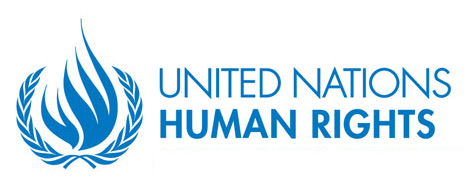This primer provides a new way of thinking about the future of supply chains—bringing together the top procurement priorities of leading global businesses and the key forces of change reshaping the very business models that have given rise to global supply chains—to enable supply chain leaders to envision and manage future-fit supply chains.
Deepening our understanding of both sets of drivers and their potential implications for supply chains creates a powerful lens through which to reimagine the ways that all parties to global supply chains create value and contribute to a more just and sustainable world. Supply chain leaders, and the organizations with which they work, should seize this moment of significant change to design and implement new supply chain management models. This primer sets out five specific recommendations to help supply chain leaders build future-fit supply chains that both drive progress on top procurement priorities and advance the sustainable business agenda.
The information here is gathered from a series of interviews and leadership dialogues with companies in our membership on the front lines of these changes; review of thought leadership from think tanks, academics, and practitioner surveys; as well as BSR’s experience helping companies in all industries evolve their approaches to supply chain sustainability.
In the months ahead, BSR will convene a series of targeted dialogues, experiential futures workshops, and a collaborative initiative that will incubate and expand on these solutions in real time, sharing and elaborating on new models that leading companies are already putting in place. We invite you to be a part of shaping the future of supply chains that we would all like to see—one in which supply chains enable human rights, climate resilience, women’s empowerment, and inclusive economies on a global scale.
Top Human Rights Risks
1: Realizing Cost Savings and Optimizing Working Capital
Delivering commercial benefit to the business is a core element of procurement that will continue to be crucially important from today through 2025. However, procurement leaders are looking to realize these goals in new ways in the future. Improvements in real-time data availability allow for more dynamic decision-making, which can in turn support cost savings and enable procurement to more efficiently manage cash. For example, procurement can combine real-time demand data with historic trends to predict stock outages before they happen and direct replenishment. Improved technology can also allow for real-time insights into invoice approval status and facilitate faster transactions.
2: Rationalizing the Supply Base
While not a new trend, procurement professionals describe reducing the number of suppliers and third parties in their supply chains as a high priority for the future. Simplifying supply chains creates business efficiencies and can help to reduce uncertainty and risk. A more streamlined supply chain increases the importance of each supplier relationship, creating incentives for companies and suppliers to collaborate on development opportunities and innovation projects. It is also critical that this rationalized set of suppliers is fit for the future, keeping pace with technological advances and aware of how global trends are shaping their businesses. Working with a smaller number of suppliers creates the conditions under which traceability, supplier partnership, and supplier-enabled innovation can flourish.
3: Improving Risk Prediction and Management
Risk mitigation will continue to be paramount for procurement leaders through 2025, but the approach to delivering on this priority is changing. Legal requirements and stakeholder expectations for risk screening and due diligence are increasing, and procurement leaders will need to leverage more sophisticated tools, triangulate information and data from more sources, and scan for risks in deeper parts of the supply chain than ever before. In the past few years, there has been tremendous growth in the number of tools and technologies available to support supply chain risk prediction, and many of these include sustainability dimensions, such as environmental, ethical, and human rights risk monitoring. Procurement leaders are working to understand and test the capabilities of these tools and considering integration into and interoperability with existing systems across the business.
4: Providing Strategic Foresight to the Business at the Highest Levels
CEOs increasingly look to CPOs to understand market dynamics, support business agility through foresight, and enable differentiation through innovation with suppliers. In 2025, the role of the CPO may include even more focus on providing this kind of strategic foresight to the business, understanding forces of change and uncertainty, and translating weak signals about supply chains into valuable business intelligence. Oxford Economics and SAP found that procurement executives among high-revenue-growth companies are more likely to say procurement within their company is becoming more strategic and more collaborative and also that procurement data and information is being used across the company.02
5: Innovating and Collaborating with Suppliers
Supplier relationship management is at the heart of many leading procurement organizations today. Looking to the future, procurement teams will increasingly look to suppliers for innovation in products and processes, and to partner on areas of mutual benefit. For example, companies describe opportunities to strengthen demand planning and inventory management in tandem with suppliers. Others highlight a need to enhance their supplier development platforms in order to achieve public-facing sustainability goals, such as science-based climate targets.
Let’s talk about how BSR can help you to transform your business and achieve your sustainability goals.

